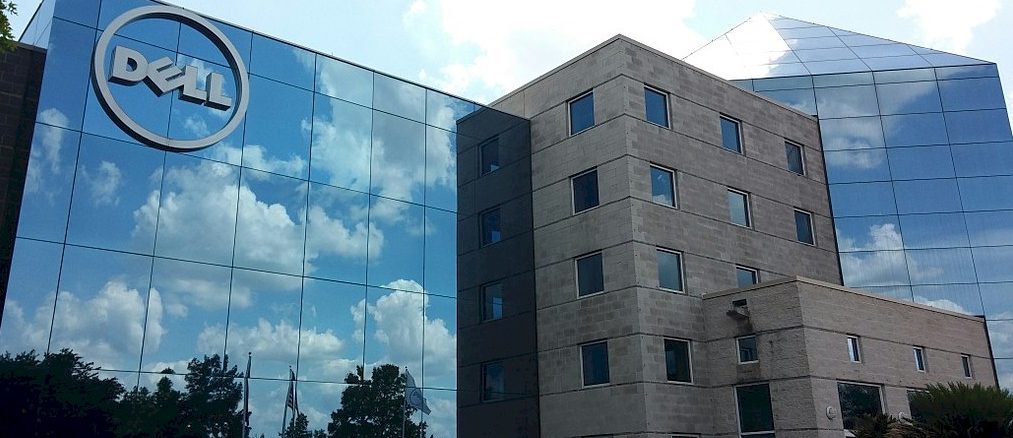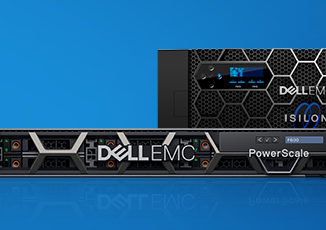
Deepak Patil knows all about the cloud. For the last third of his more than 15 years with Microsoft, Patil was one of the key figures behind the launch of Azure, the enterprise software giant’s public cloud. Azure has grown steadily and become the second-largest public cloud provider, gaining ground on market leader Amazon Web Services.
From 2016 to 2018, Patil did similar work with Oracle, leading the software vendor’s infrastructure-as-a-service (IaaS) efforts and helping that other enterprise software giant get its footing in a fast-growing public cloud arena that company co-founder Larry Ellison initially had mocked.
Patil came to Dell Technologies after that, first with the company’s Virtustream cloud platform tool and later becoming vice president and general manager of the Dell Technologies Cloud, a hybrid cloud initiative that integrates Dell products – including its VxRail hyperconverged infrastructure solution – with cloud-native offerings from VMware, such as its VMware Cloud Foundation and Tanzu Kubernetes and containers platforms. The offerings highlight the tight partnership between Dell and VMware, which both companies said will continue even after Dell – which owns about 81 percent of VMware stock – spins off the virtualization pioneer later this year.
Now Patil is senior vice president of Apex engineering at Dell, overseeing the giant tech vendor’s as-a-service and cloud efforts that are designed to bring cloud-like operating and consumption models to datacenters and the colocation facilities enterprises are using as they grow their hybrid cloud strategies. Patil’s purview also includes the edge, where Dell and other companies are pushing compute, storage and software capabilities as more data is created, processed and analyzed outside of traditional datacenters.
The exponential growth in the amount of data being generated – IDC is predicting 175 zettabytes will be created by 2025, compared with more than 59 zettabytes in 2020 – and the varying places in which it’s being generated, along with the rise of modern technologies like containers, artificial intelligence (AI) and advanced analytics, greater mobility and expanding compute, storage and network capabilities are contributing to the enterprise drive to embrace cloud benefits like improved agility, flexibility and infrastructure costs.
That drive was only accelerated by the COVID-19 pandemic, which drove much of the global business world almost overnight shift most of their workforces into remote work environments, which in turn increased the demand for cloud services.
“The last 18 months have been unlike anything anyone of us have seen in so many different aspects, and cloud and cloud-related transformation has been no exception,” Patil tells The Next Platform. “Entire economies have moved online in a very, very fast pace. Things that we would have expected to take a lot longer have happened very, very fast. A lot of the businesses that were thinking of going to a hybrid cloud strategy over a five- or seven-year horizon are thinking about their hybrid and multicloud strategy over a one- to three-year horizon. Decisions that were generally put off are being accelerated, partly because of the realization everybody has had about how quickly things can change and how significantly things can change, taking a cue from the pandemic. Thousands of our customers had to move their entire workforces to work remotely over the weekend.”
Dell for the past several years has been building out its cloud portfolio. The 2019 launch of Dell Technologies Cloud – running VCF on Dell compute, storage, and networking products – and the data center-as-a-service, fully managed by Dell and leveraging for workload provisioning and migrating, gave it an on-premises cloud-like offering for hybrid cloud environments. About 30 percent of workloads currently run in the cloud; the rest are either in on-premises datacenters or colocation facilities. AWS, Azure, Google Cloud, Oracle Cloud and other providers are offering enterprises ways to run their cloud services on-premises as well as in the public cloud. Dell, Hewlett Packard Enterprise, Cisco Systems, and similar established datacenter players are now working to offer cloud-like environments that can extend out from the datacenter.
They are doing that in part by beginning to offer their entire portfolios as a service, allowing for new consumption models – per-use and subscriptions, for example – and a more flexible and agile cloud-like environment. Apex is Dell’s as-a-service program.
“We have collectively spent a lot of times synonymizing cloud with public cloud and a lot of the cloud messaging and narrative has been controlled by the public cloud vendors, the hyperscalers,” Patil says. “Customers are realizing that their workloads are going to be in their datacenters. Portions of their workloads are going to be in co-lo providers’ datacenters, portions of the workloads are going to be in public clouds and good portions of their workloads are going to be at the edge. Whoever provides them capabilities with full acknowledgment that their workloads are going to be spread all over the place and still they should find a way to enjoy the benefits of the cloud operating model [will benefit from the evolving IT space]. Cloud is more of an operating model, not a destination. Figuring out a way to work with their cloud providers, where the benefits of cloud are enjoyed regardless of the workload location, is a big priority for the customers. That’s where the the multicloud and hybrid cloud mantra has come to the fore.”
Dell introduced Apex last year and last month at the virtual Dell Technologies World unveiled the first offerings under the Apex umbrella, including Dell Apex Storage Services, a way of offering organizations to run PowerStore all-flash storage and PowerScale for unstructured data as a service, either in their own datacenters or at colocations facilities. In addition, Dell announced Apex Cloud Services, integrated on-premises infrastructure offerings that support legacy datacenter workloads and cloud-native applications. More recently, Dell announced this week it is developing open software solutions and services for communications services providers looking to adopt software-defined industry standards and more easily integrate and manage data at the edge.
The shift to focusing more on solutions and services is not only impacting enterprises but changing how Dell designs, sells and supports its products, Patil says. As the company’s attentions moves to software, its need for software developers grows.
“We have shifted to a completely agile, continuous integration/continuous delivery [CI/CD] model, where the updates keep coming as a rolling thunder, where new capabilities are built and delivered on a daily or weekly basis, not in six months or a year on a big-update basis,” Patil says. “Given we have more than 10,000 software developers building some of these infrastructure products – just in that infrastructure group alone – it’s a fundamental shift to really move that entire 10,000- to 15,000-person software development organization to build in a rolling-thunder, continuous integration/continuous delivery model.”
In addition, in the CI/CD model, updates to the infrastructure and software are delivered over the network whenever they’re ready, without downtime and without Dell’s people having to go into enterprises’ datacenters to install the updates. Dell’s transformation to an as-a-service provider means that the company is now “way more responsible than before for the quality of service,” he says. “The key mantra is that the product is the services, the services are the product, and in this Dell-managed, customer-operated world, we’re making significant investments in analytics and management, automation and monitoring and capacity planning and capacity sizes and so on and so forth.”
The rising importance of the edge can’t be overlooked, as organizations push more infrastructure, software and services closer to where the data increasingly is being generated, stored, processed and analyzed, in large part not only to more quickly derive usable insights from the data but also to reduce the cost of sending data over the network back into the cloud analysis and management. The edge “is evolving really fast as a preferred destination for hosting workgroups, where the need for processing data and the source of the data has started to evolve as a prominent requirement. And content distribution technologies have improved, caching technologies have improved, infrastructure form factor that allows edge locations to be created has improved,” Patil says. “All of those things have contributed to edge becoming a fairly prominent model for cloud workloads.”
Dell will be keeping an eye on customer adoption of Apex offerings in the coming months. In a call with analysts and journalists last month to discuss quarterly earnings, Executive Vice President and CFO Thomas Sweet said there has been strong interest in Apex among organizations but that given how new the initiative is and how large a company Dell is, it likely will have little impact on the vendor’s financial picture this year.
“What we’re going to watch and monitor is number of new customers coming into Apex to make sure that that’s ramping as appropriate and within our plans,” Sweet said. “Then, as it becomes more relevant to the financial situation, we’ll begin to give you some framework to think about around that. But on a subscription and revenue – with a subscription-based offering – clearly revenue and cash flows are impacted as that business ramps. But I’m confident given our size, our scale, our ability and our strong balance sheet, that we’ll navigate through that as appropriate.”





Be the first to comment